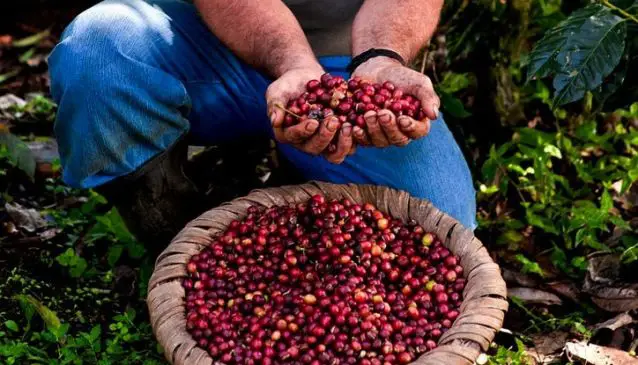Coffee arrived in Latin America in 1720, with the first seeds of the Coffe arabica species that was sown in Martinique, but the aromatic grain touched Costa Rican soil at the end of the 18th century until then all that was practiced was subsistence farming. The story changed in 1808, when the then-governor Tomas de Acosta, decided to boost the cultivation of the grain in the fertile volcanic soils of the Central Valley.
As plantations grew, Costa Rican’s interest in coffee expanded. The coffee activity was flourishing in our country in the early nineteenth century, but the great change occurred in 1832 with the first export of the grain to England, a fact that would completely change the destiny of our small Central American country.
This shipment that took more than three months to reach its destination motivated the then-president Braulio Carrillo, in 1840, to decree that the lands of the western sector of San José would be dedicated exclusively to the sowing of coffee. Carrillo thought that the State should direct coffee policy and look for markets and that the most important market was precisely England, for this reason, he orders a road to be built towards the Caribbean region that would allow the country to have a direct route to the British ports.
The promising coffee business for the country
The coffee business led to the rapid establishment of commercial companies that exported the grain to Europe and at the same time imported manufactured merchandise from the old continent that improves the quality of life of the population.
The need to trade coffee which was by 1890, the only export product of the country motivated the construction of better roads for mechanized transport and therefore the abandonment of the mule as the main means of transporting agriculture cargo.
The economic boom of coffee quickly impacted the daily life of Costa Ricans, with profound transformations not only in infrastructure but in fields such as health, education, and culture. Profits obtained from coffee exports allowed among many works, the establishment of a mail service, a state printing press, the construction of the San José hospital and the San Juan de Dios hospital that are currently still operating, as well as the foundation of the first Costa Rican university, the University of San Tomas and the construction of the National Theater.
The country has unbeatable agronomic conditions to produce coffee of the Arabica variety, so it has concentrated its efforts on improving the quality standards of its golden grain.
Our country aims to double coffee production in four years

The country has unbeatable agronomic conditions to produce coffee of the Arabica variety, so it has concentrated its efforts on improving the quality standards of its golden grain. Based on this premise Costa Rica will implement a National Technology Transfer strategy for Coffee, which wills almost double the current annual production of the aromatic bean for 2023.
Together with the National Institute of Agricultural Technology Research and Transfer (INTA) and the National Coffee Institute (Icafe) of CostaRica, which are responsible for implementing the aforementioned strategy in an articulated manner, which will contribute to improving the support services to coffee growers and increase the national production?
According to these entities, the main purpose is that the plan facilitates the achievement of the national production goal of 200 thousand bushels of coffee in 2023, almost double the million 704 thousand bushels in the 2018-2019 harvest.
To meet the Safe objective, it has established three pillars, a genetic basis to ensure the optimal brands that adapt to climate change; technological transfer and the adequate finance systems where the beneficiary companies will play a substantive role in direct management with the producers.
With this joint public/private effort of national coverage, it is intended the increased productivity and improving the competitiveness of the coffee sector, but in particular, it is to improve the quality of life of the coffee-producing families.
Costa Rica has divided its coffee production into eight distinct regions:
- The Central Valley: It has fertile volcanic soils that produce a coffee with high acidity and fine good aroma with a chocolate-like flavor.
- The Western Valley: The coffee that is harvested here has a peach and apricot flavor.
- The Tarrazu Mountains: coffee with fine acidity, similar to citrus fruits, lemon or orange.
- Tres Ríos: Coffee with a perfect balance between acids and aroma is generated.
- Orosi: Coffee is soft and has a great aroma.
- Coto Brus and Pérez Zeledón: highly valued for their compatibility with coffees of other altitudes.
- The Turrialba region: with its rainy climate it produces a coffee with low acidity and good aroma.
- Guanacaste: Its plantations occur in a warm and dry climate, they are in the shade of forested areas.

